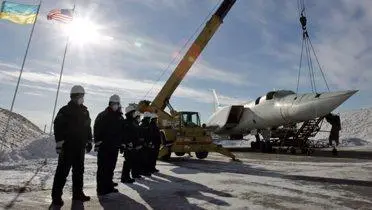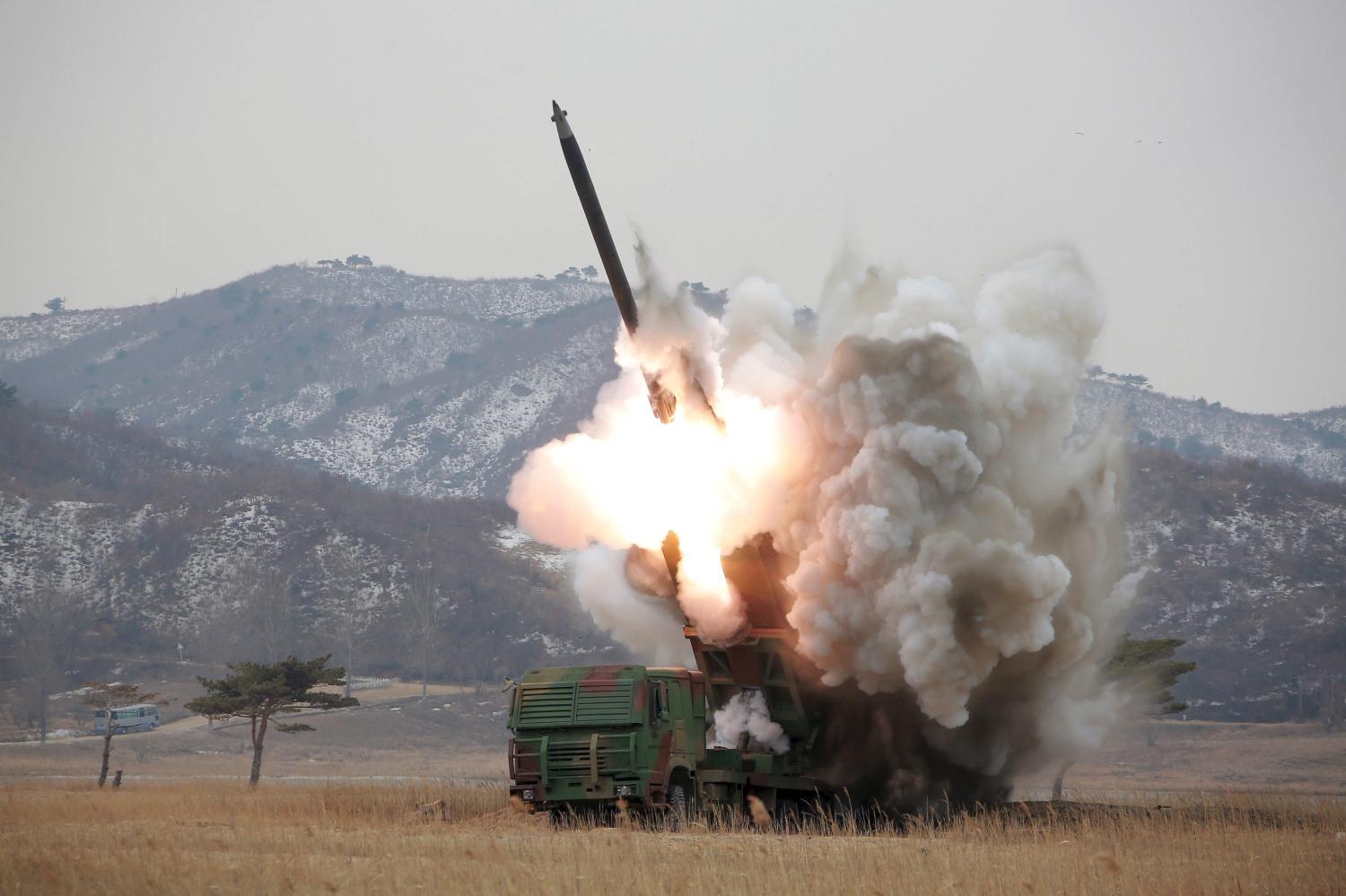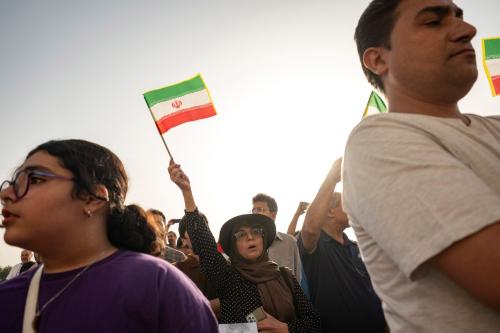When the Soviet Union collapsed in 1991, Ukraine had the world’s third largest nuclear arsenal on its territory. When Ukrainian-Russian negotiations on removing these weapons from Ukraine appeared to break down in September 1993, the U.S. government engaged in a trilateral process with Ukraine and Russia. The result was the Trilateral Statement, signed in January 1994, under which Ukraine agreed to transfer the nuclear warheads to Russia for elimination. In return, Ukraine received security assurances from the United States, Russia and Britain; compensation for the economic value of the highly-enriched uranium in the warheads (which could be blended down and converted into fuel for nuclear reactors); and assistance from the United States in dismantling the missiles, missile silos, bombers and nuclear infrastructure on its territory. Steven Pifer recounts the history of this unique negotiation and describes the key lessons learned.
EXECUTIVE SUMMARY
The Trilateral Process
The collapse of the Soviet Union in 1991 left Soviet strategic nuclear weapons—both strategic nuclear warheads and delivery systems—located on the territory of four newly independent states: Belarus, Kazakhstan, Russia and Ukraine. Soviet tactical nuclear weapons were even more widely scattered. Moscow quickly secured the return of all tactical nuclear warheads to Russia during the first half of 1992. Moscow also in relatively short order reached bilateral understandings with Belarus and Kazakhstan on the removal or elimination of the strategic nuclear weapon systems on the territory of those countries.
The process with Ukraine proved more difficult, as Kyiv sought to achieve particular objectives before giving up what was then the third largest nuclear arsenal in the world. Among other things, the Ukrainian government wanted acceptable answers to four key questions:
- Possession of nuclear weapons was seen to confer certain security benefits; what guarantees or assurances would there be for Ukraine’s sovereignty and territorial integrity after it gave up strategic nuclear arms?
- The strategic nuclear warheads had commercial value in the form of the highly-enriched uranium (HEU) they contained, which could be blended down into low-enriched uranium (LEU) and used in fuel rods for nuclear power reactors; how would Ukraine ensure that it received the value of the HEU in the nuclear warheads on its territory?
- Eliminating the intercontinental ballistic missiles (ICBMs), ICBM silos, strategic bombers and nuclear infrastructure in Ukraine would be an expensive proposition at a time when the new Ukrainian economy was sharply contracting; who would cover the costs of those eliminations?
- How, where and under what conditions would the strategic nuclear warheads, ICBMs and bombers be eliminated?
Bilateral Ukrainian-Russian negotiations grappled with these issues in the months after the fall of the Soviet Union. They began to identify solutions to some questions but never successfully came to closure. The September 1993 Massandra summit between Ukrainian President Leonid Kravchuk and Russian President Boris Yeltsin initially appeared to have achieved a formula for the transfer of the strategic nuclear warheads to Russia and the resolution of all ancillary issues. The bilateral deal, however, collapsed almost immediately.
Getting the nuclear weapons out of Ukraine topped the U.S. agenda with that country in its first years of independence. Washington wanted the nuclear warheads transferred to Russia but was sympathetic to some of the Ukrainian government’s concerns and actively discussed the issue—and related questions such as compensation and security assurances—separately with both sides from early 1992 on. The first trilateral meeting of American, Russian and Ukrainian diplomats took place in August 1993. Originally agnostic as to how the question would be resolved—as the result of a bilateral Ukrainian-Russian negotiation or of a process involving the United States—Washington concluded in the aftermath of the Massandra summit that it would have to become more directly involved in brokering a solution. Both the Russians and Ukrainians welcomed U.S. participation, the Russians because they understood that Washington shared their goal of getting the nuclear weapons out of Ukraine, the Ukrainians because they believed that, with American officials engaged in the process, they would have a friend in court and could achieve a deal that better answered their four key questions.
The trilateral discussions accelerated in December, producing the Trilateral Statement and accompanying annex, signed by Kravchuk, Yelstin and U.S. President Bill Clinton in Moscow on January 14, 1994. Those documents provided that Ukraine would transfer all strategic warheads on its territory to Russia for elimination and, in return, would receive security assurances, compensation for the commercial value of the HEU, and Nunn-Lugar assistance to help with the disposal of ICBMs, ICBM silos, bombers and other infrastructure on Ukrainian territory. Perhaps as importantly but less tangibly, the Trilateral Statement removed what would have been a major impediment to Ukraine’s development of normal relations with the United States and the West.
The final act of the trilateral process played out in autumn 1994, with Ukraine’s accession to the Nonproliferation Treaty (NPT) as a non-nuclear weapons state. Clinton, Yeltsin and newly-elected Ukrainian President Leonid Kuchma met on December 5 in Budapest on the margins of the Conference on Security and Cooperation in Europe summit. Kuchma transmitted Ukraine’s instrument of accession to the NPT, the Strategic Arms Reduction Treaty (START I) entered into force, and the United States and Russia, joined by the United Kingdom, extended security assurances to Ukraine in what became known as the Budapest Memorandum of Security Assurances.
Lessons Learned
After the Trilateral Statement and Budapest Memorandum were signed, implementation proceeded relatively smoothly. By June 1, 1996, Ukraine had transferred the last of the nuclear warheads on its territory to Russia for elimination, and the last START I-accountable strategic nuclear delivery vehicle, an SS-24 missile silo, was eliminated in 2001. More broadly, Ukraine’s denuclearization opened the way to an expanded U.S-Ukrainian bilateral relationship. Among other things, by the end of the 1990s, Ukraine was among the top recipients in the world of U.S. assistance. Denuclearization also removed what would have been a major impediment to Ukraine’s development of relations with Europe. In 1997, NATO and Ukraine agreed to a “distinctive partnership” and established the NATO-Ukraine Council.
Several factors explain the success of the trilateral process. They include:
The ability to find a solution that met the interests of all parties.
The trilateral process succeeded because it found a “win-win-win” solution that met the minimum requirements of all three participants. The minimum requirements for Russia and the United States were that Ukraine transfer or eliminate the strategic offensive arms, including the strategic warheads, on its territory. While Washington shared Moscow’s minimum requirements, it also wanted to resolve the nuclear issue so that it could move to a regular relationship with Ukraine. For Ukraine, the minimum requirement was good answers to questions regarding security assurances for Ukraine, compensation for the economic value of the HEU in the nuclear warheads, assistance for eliminating the nuclear legacy on Ukrainian territory, and conditions for the elimination of the strategic missiles, bombers and warheads. The sides’ minimum requirements allowed space for a solution acceptable to all, and Kyiv concluded that 1994 was the right time to cash in its nuclear chip. U.S. engagement made that easier for Kyiv by helping to rectify an inherent imbalance between Ukraine and Russia.
The importance of “doing what works.”
The trilateral process succeeded because the sides were prepared to look for practical solutions and “do what worked.” On issues ranging from security assurances, to dealing with troublesome language in resolutions passed by the Rada (Ukraine’s parliament), to the need to keep some commitments in private channels, the sides found practical solutions.
The value of using events and presidential involvement to drive the process. U.S. officials used high-level meetings—including the possibility of expanding the January 1994 Clinton-Yeltsin meeting to include a trilateral session with Kravchuk and later the December 1994 Conference on Security and Cooperation in Europe summit in Budapest—to drive the trilateral process. Once these dates were fixed on presidential calendars, deadlines were established that forced the bureaucracies of all three countries to work harder and faster than they would have otherwise.
The value of money in easing solutions. The U.S. ability to commit resources at key points facilitated moving the process along, including using Nunn-Lugar monies to fund the elimination of strategic offensive arms in Ukraine and to “jump start” the process of Russia providing fuel rods for nuclear reactors to compensate Ukraine for the value of the HEU in transferred nuclear warheads.
The importance of understanding the other side’s needs. Understanding the other side’s needs and its internal political dynamics was critical to devising proposals that would yield a solution acceptable to all three parties. Both Washington and Moscow might have done better in this regard, especially during 1992 and 1993. For example, by focusing so heavily on nuclear weapons in the first two years of its relations with independent Ukraine, Washington failed to create confidence in Kyiv that there would be a robust Ukrainian-American relationship once the nuclear weapons issue was resolved. The initial U.S. fixation on nuclear weapons may well have had the unintended effect of increasing their value as a political bargaining chip in the minds of some Ukrainians.
These lessons may be applicable in other cases. Were North Korea or Iran to move away from their maximalist positions on nuclear weapons and open up some bargaining space, these lessons could prove useful in the Six-Party Talks and P-5 Plus One processes regarding those countries’ nuclear weapons programs. The circumstances that produced a successful trilateral process in 1993-94, however, were in certain ways unique, in particular in terms of the readiness of the Ukrainian and Russian governments to accept the United States as a participant. In the end, the three sides’ interests sufficiently coincided to produce a diplomatic success.
The Brookings Institution is committed to quality, independence, and impact.
We are supported by a diverse array of funders. In line with our values and policies, each Brookings publication represents the sole views of its author(s).





